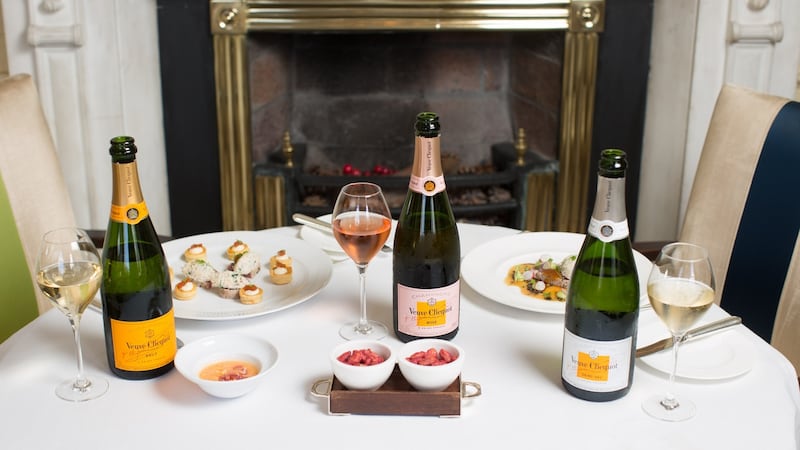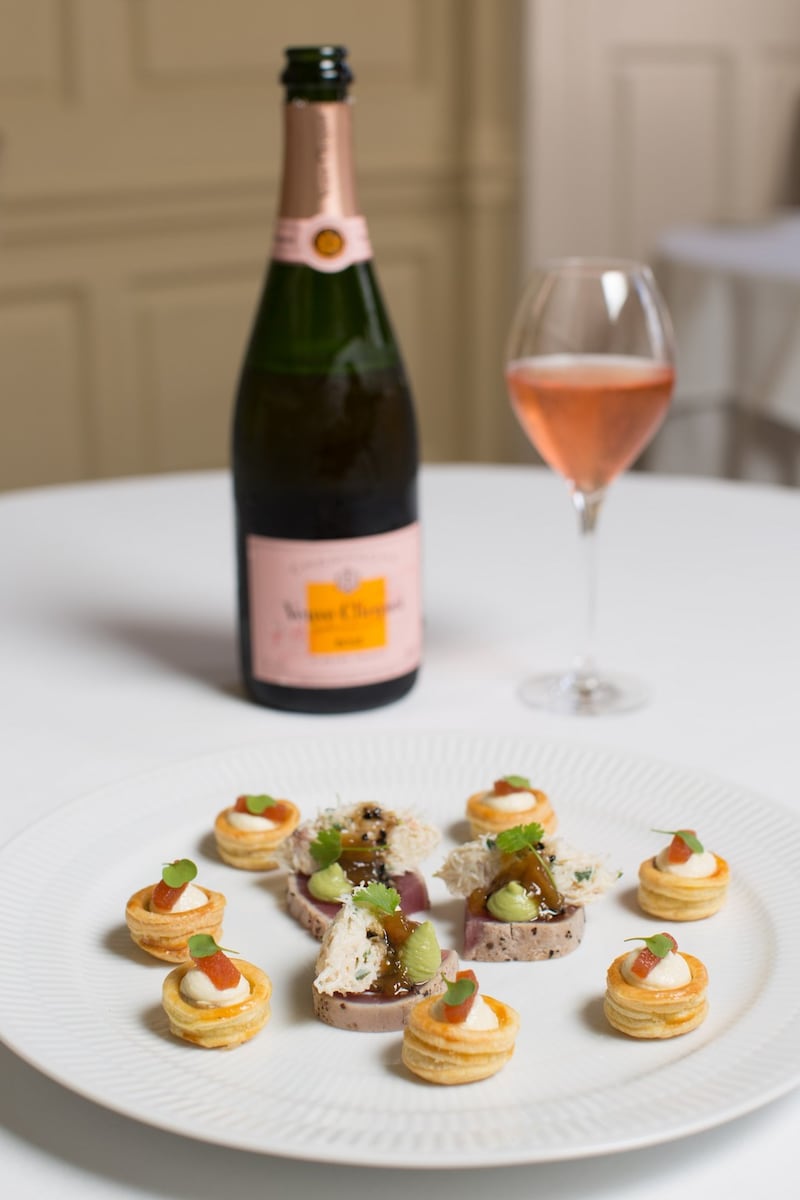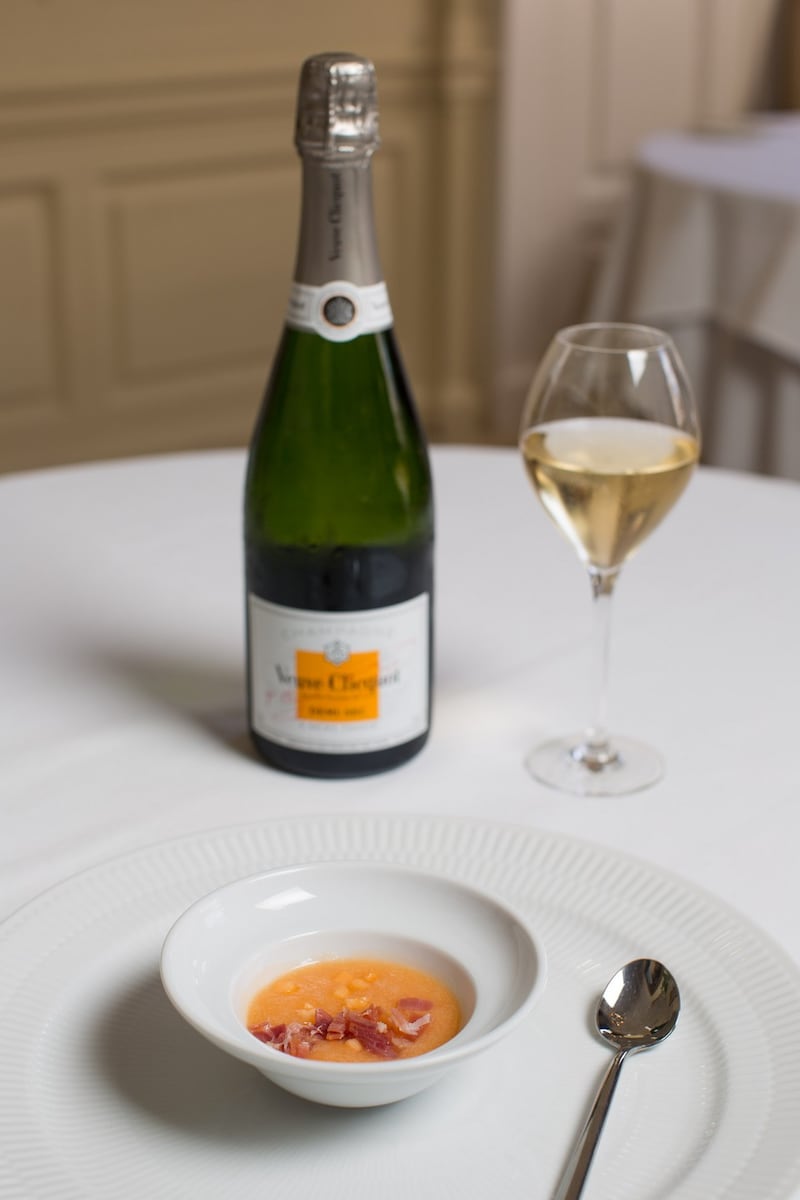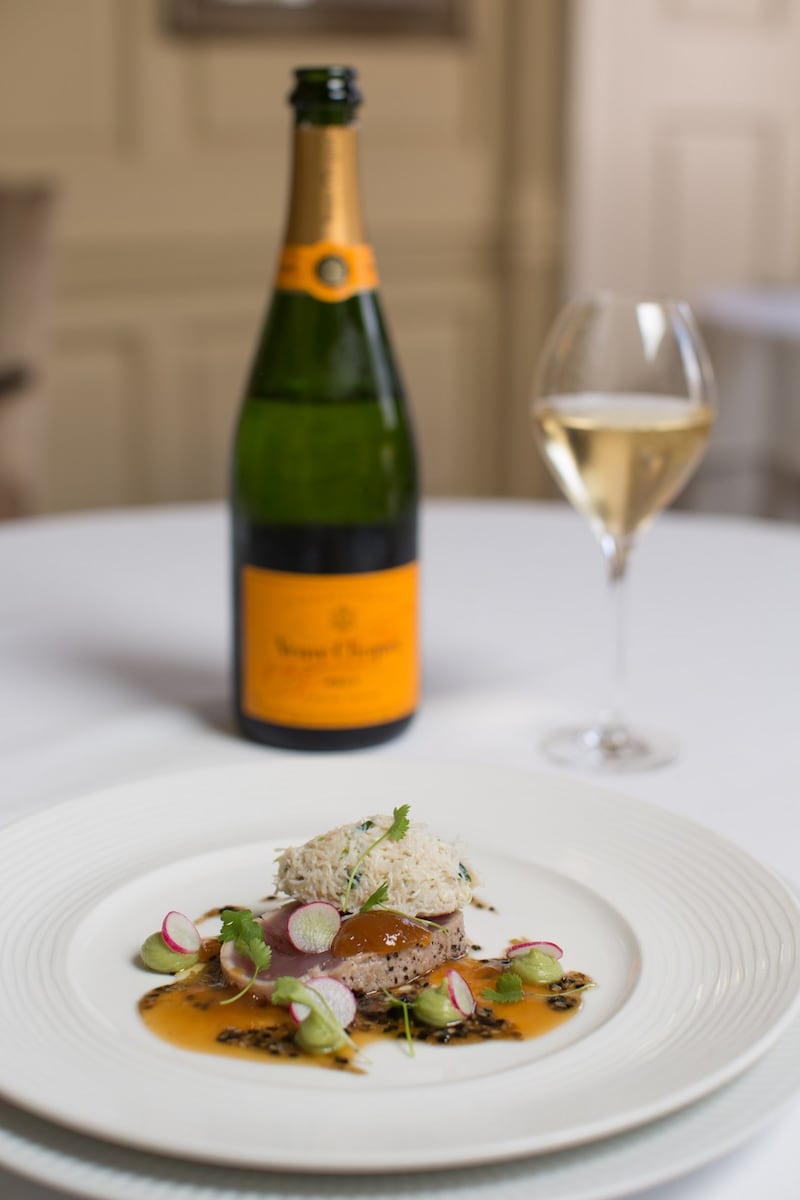When sommelier Julie Dupouy recently tasted a food and wine pairing that really worked, somewhat unexpectedly, it was "like the lights went on in my mouth".
It is an elegant turn of phrase, and one that perfectly reflects the accomplished and genial French woman who is the best female sommelier in the world, having taken third place at the World Championships in Argentina last year.
It was a spicy tomato sauce, with some sweetness in it, served underneath a lightly cooked scallop that was perplexing the wine expert.

"Nothing was working. I tried so many things and then finally I tried a bone-dry white wine from Tenerife, and I was like, 'Chef, you have to taste this'. I wanted to laugh, it made me so happy. Every customer we gave it to actually commented on how much they loved the pairing," she says of her Eureka moment at the Greenhouse, the Michelin-starred restaurant in Dublin where she works alongside her husband, restaurant manager Paul Young.
In addition to her part-time role at the restaurant, Dupouy also runs a consultancy business, Down2Wine, and is brand ambassador for the wine and spirits distributor Edward Dillon & Co's portfolio of Champagne houses, which includes Veuve Clicquot, Ruinart, Moët & Chandon, Krug and Dom Pérignon.

At the Body & Soul Festival in Westmeath, June 23rd-25th, Dupouy will be part of a strong food and drink programme at the Veuve Clicquot Sparkling Conversations Salon, where she will talk about pairing Champagne with food.
It is a subject close to her heart. “In Ireland people are more used to drinking Champagne for a celebration; you open it before dinner, or you go out and maybe have a bottle in a nightclub. But I really love when we do a Champagne [tasting] dinner, to see how people really enjoy it and are surprised, because if you do it right, it actually works well.
Versatility of Champagne
To illustrate the versatility of Champagne as a wine to be enjoyed with food, Dupouy selected three from Veuve Clicquot and compared how they matched up with a selection of dishes prepared by Peter Byrne, executive head chef at Restaurant FortyOne, in the now membership-free Residence on St Stephen's Green in Dublin.
“I find Veuve Clicquot, out of all the houses we work with, the range is in a way the broadest because you go from dry, to vintage, to rosé, to vintage rosé, to prestige, to demi-sec. There is even what is called the rich vintage, which is a vintage Champagne with a little more sweetness than the regular brut, but less so than the demi-sec, so there is lots to work with which is incredible in terms of pairings.”

Veuve Clicquot Yellow Label Brut, rosé and demi-sec were poured, and across a range of foods, including melon gazpacho with Parma ham, mini Manchego vol-au-vents, a complex plate of seared tuna with sesame, avocado, crab and yuzu jelly, and a petit four of candied raspberry almonds, the Champagnes proved remarkably versatile.
Dupouy remarked on the ability of the demi-sec, more often considered a partner for desserts, to partner with the tuna dish. “With some Asian dressings, which tend to have a bit of spice and sweetness, the demi-sec works extremely well.” She has also paired it with dishes that have curry in their flavour profile, and found it to be a good match.
The Yellow Label Brut with the sweet melon gazpacho was the only combination that jarred, the sweetness of the fruit and the dryness of the wine at odds with each other.
“In terms of food and wine pairings, you’ve got to try to match the level of sweetness of the dish with the level of sweetness of the wine. When you have the same level of sweetness in both, it actually decreases the sensation of sweetness, and the same with acidity: if you have high acidity, in vinaigrette for example and you serve it with a dry Champagne, which is high in acidity, they will balance each other to a point where it feels like less acidity, and you don’t think about it any more.”
Down-to-earth approach
Considering the complexities involved, Dupouy has a refreshingly down-to-earth approach to her career. Can a good food and wine pairing heighten a diner’s experience, I ask her. “Yes, as long as you don’t spend half an hour at the table explaining why you’re doing something,” she says.
“If the work is done between the chef and the sommelier and the customer arrives and you give them pairings that work, I think even someone who doesn’t have alot of knowledge about wine, or about food and wine pairing, will notice. You really see reactions and people then start understanding there can be quite a lot layers to the enjoyment of food with wine.

And if someone orders a wine that is at odds with their food choices, does she offer an opinion, or keep quiet? The white wine with fish and red with meat generalisation comes to mind.
“It wouldn’t bother me so much because I have plenty of examples of where people come in and say ‘We don’t like white wine, we only drink red wine’.
“There are two options, you could try to convince the customer to have a bottle of white wine, which they are not going to enjoy because they don’t like white wine, or you could say to them, listen you know what, at the end of the day the food and wine pairing is not the most important thing, you having a good time is the most important thing. So pick a bottle of red wine of the style that you like, and don’t worry about the pairing, have a good time and enjoy the wine and the dish.”











